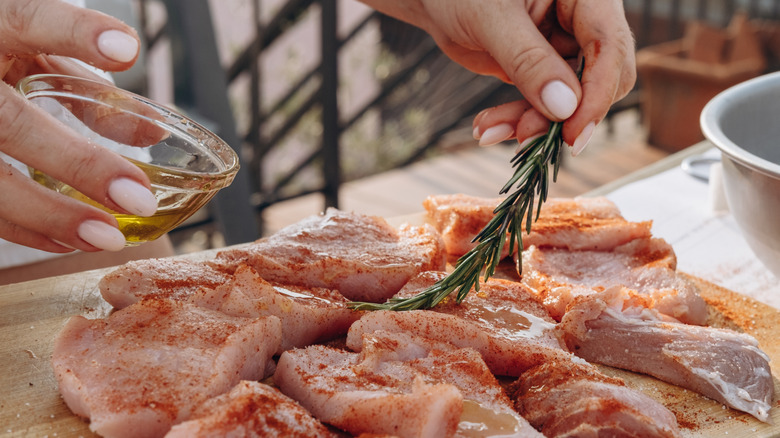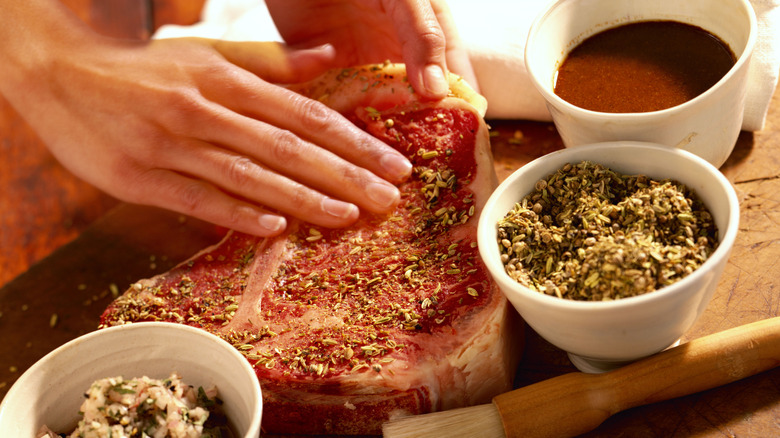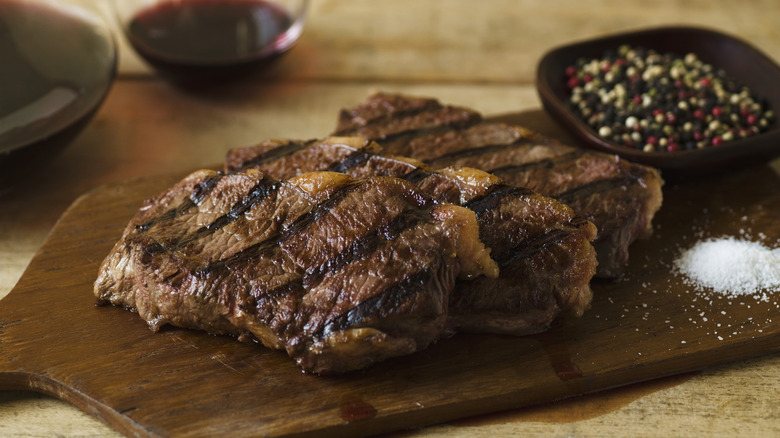The Marinating Technique That Breaks All The Rules
There are some cooking methods that most home gourmands take as the gospel truth: the pre-cook marinating ritual, for example. Everyone assumes you should marinate your beef, chicken, fish, and what have you first, and then grill it. The marinate-first-grill-second argument might be a thing if there weren't already instances where it isn't, well, a thing. Take escabeche, the process of marinating something after it's cooked. This form of reverse marinating — which finds favor in Filipino, Portuguese, Spanish, and Latin American cooking — asks for meat and other dunkables to be immersed in the marinating juice post-cook.
While this approach may seem backwards, there's some solid reasoning behind it. The sugar and moisture in your marinade are a double-edged sword. On the one hand, kind of like how you could tenderize a chewy steak with a mallet, marinating also helps mitigate the toughness of many proteins. On the other hand, the sugar content can force the meat to skip the searing process and go straight into the steaming and possible burning stage, instead. Reverse marinating sidesteps this issue. It allows you to cook the meat fully while still immersing the protein in an acidic liquid that both tenderizes it and makes it more flavorful.
The best ingredients for a reverse marinade
The short answer to what goes into a reverse marinade recipe is: almost anything. The longer answer involves the same things that go into a simple salmoriglio marinade recipe. Most marinades call for acids, fats, seasonings, sugar, and salt. You'll also occasionally see a call for alcohol or enzymes. It's the combination of these elements that makes the recipe unique.
Practically speaking, recipes will often contain ingredients like chopped red, green, yellow, or hot peppers, including jalapeños. Aromatics like onions or garlic also find a place in these recipes. As far as the acids are concerned, vinegar comes to mind, as does lemon or lime and even tomatoes. Your oils will be olive or another kind of vegetable oil, like coconut or peanut oil. Sugars include white or brown sugar, though they're not limited to those.
Seasonings such as thyme, sage, and oregano, plus some kind of salt and pepper, will find their way into reverse marinade recipes. Try experimenting with options like kosher or pink Himalayan salt and white pepper (instead of black pepper) to broaden your flavor perspectives.
How to reverse marinate your proteins
When you reverse marinate your protein, your meat will get most of its flavor after it's cooked and set in the marinade to soak. However, that doesn't mean it goes into the pan with nothing on it. It does get some seasoning, but it's minimal. For example, a chicken and seafood reverse marinade might get a coating of oil, a dash of salt, and some seasonings before it's put on to cook. And then, depending on the meat you're cooking, it'll stay on the heat for 10 to 12 minutes (Just make sure it's cooked to the proper internal temperature) before it's removed from the grill or burner and readied for reverse marinating.
It's easiest to prepare the marinade before you start cooking because most recipes call for the protein to go into the marinade almost immediately after it's removed from the heat. While it's true that you can serve it right after it gets tossed around in the marinade, some recipes call for it to sit in the marinade for 15 minutes to an hour. And it isn't unusual for some recipes to employ a bit of that science-based marinade magic for up to 24 hours.
Finally, like most perishable items, the meat soaking in a reverse marinade recipe needs to be refrigerated if it'll be out longer than just a few minutes. Even though the meat isn't raw, it has the capacity to go bad like anything else that's left out for too long.


